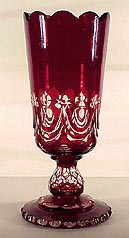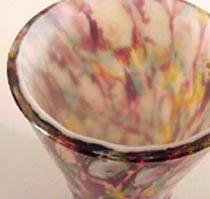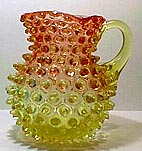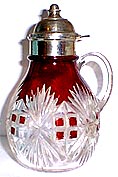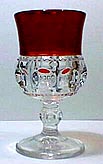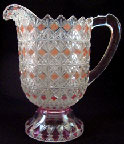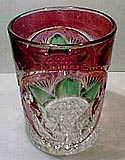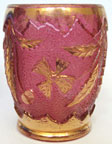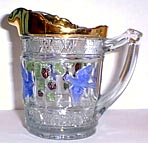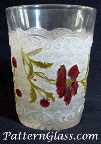|
Flashing is often erroneously called plated or cased glass,
but the processes are very different.
From the Corning Glass Museum.
FLASHING - The application of a very thin layer of glass of one color over a layer of contrasting color. This is achieved by dipping a gather of hot glass into a crucible containing hot glass of the second color. The upper layer may be too thin to be worked in relief. After the piece is dipped in glass of a contrasting color, it is blown to final form.
And here's what the Welkers said in the Glossary
of their book.
Pressed Glass in America:
"Flashed.The process of a glass item being dipped into hot glass of another color
in such a manner to cause only a thin layer of it to adhere. This
is a less expensive method for making a piece of glass appear to
have been made in a solid color. This is a blown glass method and is not
to be confused with staining used on pressed glass."
|
|
Also
known as plating, flashed glass is sometimes cut through to the
thicker layer beneath the
flashing. Some early New England Glass and Sandwich pieces were made
with this process, and a lot of the European cut-to-crystal is
flashed. Flashing
was a more expensive process and not used for EAPG tableware. The
flashing is probably about as thick as a sheet of paper & can
still be scratched through, but not as easily as staining. While cased glass is always blown, flashed glass can be blown but it often isn't. |
A ruby flashed celery vase from Karen's Collection.
Likely European. |
